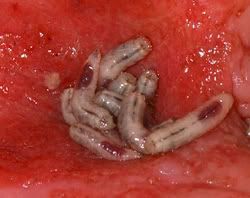Global Warming is not a new topic by any stretch of the imagination, but the events of the past 12 months probably give it a new resurgence. Last year Al Gore's seminal work
An Inconvenient Truth brought the story back to the forefront with huge cinematic presence. The iconic image of a swirling hurricane storm system rising from an industrial smokestack dredged up sickening memories of the 2005 monster hurricane season. Late January brought ten corporations including big boys like Alcoa, BP America, Caterpillar, DuPont, General Electric, Lehman Brothers and four energy conglomerates to Washington to voice their collective concern. This was promptly followed by a host of top lawmakers, news of G8 members making it a top priority and the real touchstone, President Bush jumping on the global warming issue, this coming from a man who six years ago, through his press secretary said a 'Big No' to the need to change our lifestyles given our consumption needs outstripping every other nation many times over.
But the particle boards of politics are not the boards we saw at the Ripsaw. No, let us only concern ourselves with the science, the data at hand.
Perhaps the biggest problem is the name itself. It's easy to grasp the phrase Global Warming, experience a lack of such relative warmness and dismiss the entire exercise. Let me assure you, here in the gelid depths of Michigan, a little warming would be appreciated here in the thick of February.
Of course, when scientists speak of Global Warming, they don't mean the fun digits the weather man puts on your screen every morning, but rather, the consistent increase in temperature of the world's oceans, our most reliable global thermometer. The data are irrefutable: the oceans have been warming up for most of the past century and show no sign of breaking trends from our production of carbon dioxide.
We here in the States enjoy a second buffer, that is to say our geography. Living in one of the most fertile and buffered lands means our food production rarely suffers, especially coupled with our strong economic ability to purchase surplus from anywhere in the world and seize entire tributaries of product.
If the world were to begin developing conspicuous lesions that would capture the imagination of the press, it would happen in a delicate environment already dangerously balanced; say Australia. A little precipitation redistribution, a bit of advanced deforestation and soil erosion, and we could see famine and civil war collapse into any society within decades. Of course, I'm speaking hypothetically - Australia may have a lot of environmental damage but they're not collapsing. However, this kind of tragedy is already being played out right now in Haiti, in Somalia, in Nepal and in Afghanistan. Why we choose to ignore the very real impact the environmental damage we've done that's causing the severe political turmoil in these areas is likely a product of our lack of understanding of the data. Perhaps that
will change soon. The data is difficult to understand, to devise a plan from it even harder. However, Science is a cumulative effort, a dynamic knowledge body that we constantly modify and shape as new data streams in to shore up certain ideas and demolish others. Nothing is sacred - there is no room for nostalgia or tradition in science, only truth. In that spirit, the data is marching in a specific direction, and it appears for the first time that a true sea change (no pun intended) is occurring with the world at large. Indeed, global warming may be the first thing that unites all peoples together. After all, we haven't quite perfected lunar living, we're all stuck with each other until such an auspicious occasion.
If you're in search of further hard information,
enjoy these links.
A fluorescent light bulb here, an efficiency toilet there, a whole mountain of knowledge everywhere, and we all might just have a nice place to live for a lot longer.














